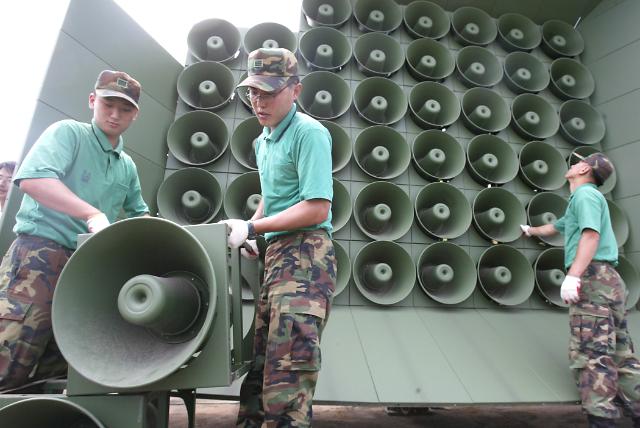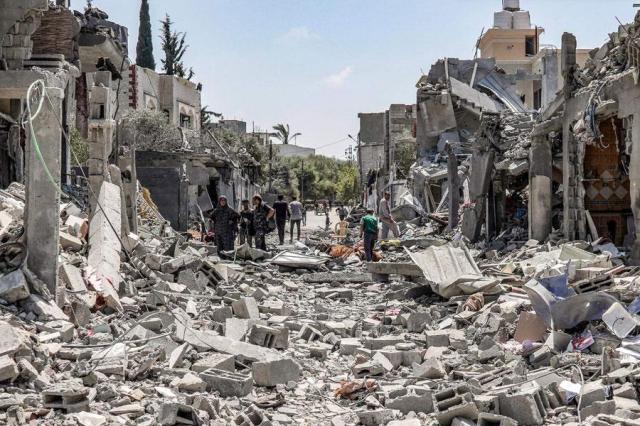
[Yonhap Photo]
SEOUL -- In an effort to foster a peaceful mood ahead of this week's inter-Korean summit, South Korean troops stopped cross-border propaganda broadcasts using high-decibel loudspeakers which were switched back in early 2016 at the height of military tensions caused by North Korea's nuclear and ballistic missile tests.
The South's defense ministry said Monday that front-line propaganda loudspeakers were switched off along the demilitarized zone (DMZ), which bisects the Korean peninsula, as of midnight Sunday to ease tensions and create "a peaceful atmosphere" for inter-Korean talks.
"We hope this action will lead to the suspension of mutual slandering and propaganda activities between the two Koreas and contribute to peace and a new beginning," the ministry said in a statement.
In the run-up to their summit on Friday in the truce village of Panmunjom, the Koreas have taken a series of conciliatory steps. A hotline was set up last Friday between South Korean President Moon Jae-in and North Korean leader Kim Jong-un, ending the absence of high-level communication across the heavily armed border.
At the weekend, the North said it would stop all nuclear and ballistic missile testing and close a nuclear test site. On Monday, South Korea turned off propaganda loudspeakers which have been set up at 40 places to blare messages criticising the North's leadership.
Cross-border propaganda broadcasts have been running on and off on both sides. In January 2016, South Korean loudspeakers were switched back after an 11-year break. Along with fixed clusters of loudspeakers, South Korea used vehicles mounted with loudspeakers to evade possible attacks from North Korea's artillery. The North has threatened to blow up loudspeaker batteries, calling them an act of war.
The DMZ is a four-kilometer-wide strip of land that has divided the Korean peninsula since an armistice accord ended the 1950-53 Korean War. The buffer zone was originally set up to be clear of heavy weapons with border guards allowed to use only personal sidearms like pistols for patrolling to prevent any unnecessary clashes.
Inside the zone, North Korea has violated the armistice accord to deploy mortars and large-caliber machine guns at 160 guard posts, sparking sporadic armed clashes. South Korean troops have built concrete bunkers for guardposts in 60 places inside the DMZ.




![[OPINION] NATO – The Enduring Alliance](https://image.ajunews.com/content/image/2024/02/01/20240201172526984016.jpg)